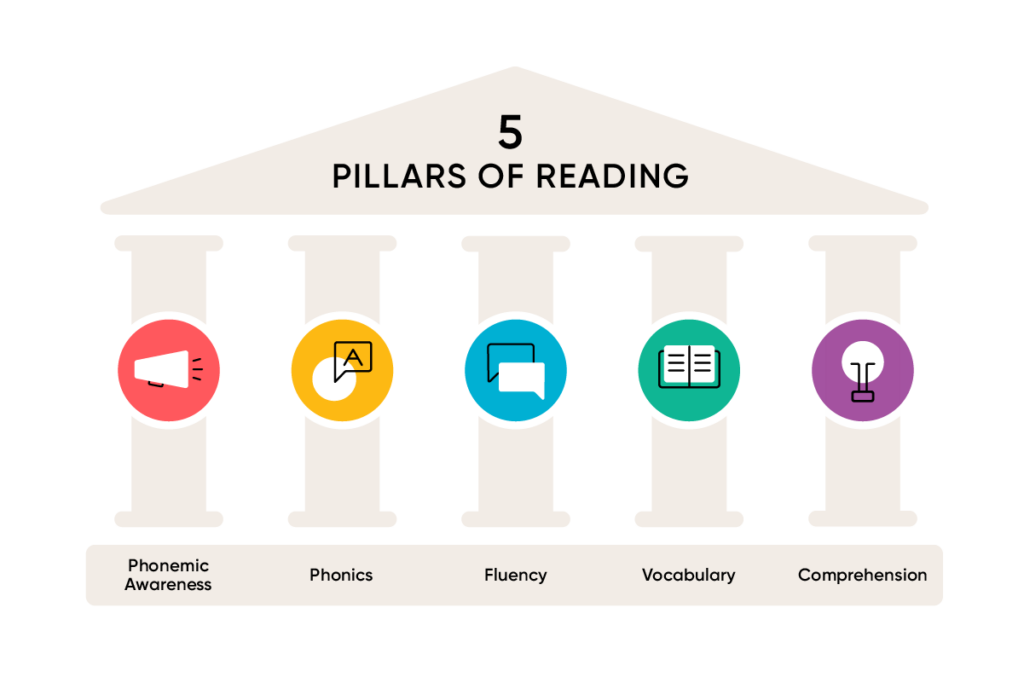
When the 2024 National Assessment of Education Progress—the Nation’s Report Card—was released in January, it set off loud alarms about U.S. student literacy skill development. Once again, reading scores declined, adding to a decade of decreases. In fact, average reading scores declined in 2024 for students in 4th grade and 8th grade by 2 points nationally, compared to 2022.
Sadly, we see what happens when young struggling readers do not receive appropriate interventions in our country’s adult literacy rates. According to the National Center for Educational Statistics, in 2023, 54 percent of U.S. adults were reading below a 6th-grade level. Low literacy rates are linked to higher unemployment, lower income, and reduced competitiveness. In fact, a 2020 study by the Barbara Bush Foundation showed that if all U.S. adults were able to move up to at least Level 3 of literacy proficiency, it would generate an additional $2.2 trillion in annual income for the country, equal to 10 percent of U.S. gross domestic product.
Thankfully, over the past several years, there has been an intensified emphasis on turning the tide of this distressing trend as a result of a mainstream focus on the research behind successful reading instruction. Media, such as Emily Hanford’s popular, “Sold A Story” podcast that investigates the ongoing reading wars among phonics, whole language, balanced literacy, and the science of reading and the documentary, “The Truth About Reading,” which debuted at SXSW 2024, have increased the focus that lawmakers, parents and, of course, educators are paying to improve our lagging literacy scores.
As a result, the outlook for improving student literacy development is far brighter than what recent assessments might indicate. There are national trends in literacy learning, which have permeated schools in every state in the country and are helping to turn the tide so that all children become proficient readers and learners. Here is how this movement is transforming schools in 2025:
- The science of reading is here to stay. With more than 40 states having mandated the evidence-based approach to literacy instruction, it is likely to become the standard instructional method across our diverse country. The science of reading is built around five pillars, including phonemic awareness, phonics, vocabulary, fluency, and comprehension.

Pillar #1
Phonemic awareness: The ability to identify and manipulate the individual sounds in spoken words. This is an important skill for learning to read and spell.
Pillar #2
Phonics: The ability to match individual sounds to letters or groups of letters.
Pillar #3
Vocabulary: the knowledge of words and their meanings.
Pillar #4
Fluency: the ability to read text accurately, quickly, and with expression.
Pillar #5
Comprehension: the ability to understand and make meaning from text.
Each component plays a crucial role in developing strong reading skills, and educators who understand and effectively teach these pillars are increasing the chances their students will become proficient readers.
- Personalized learning and targeted early intervention are vital for accelerating student abilities. An outgrowth of the science of reading movement has been an increased focus on personalized learning and targeted intervention for struggling readers. Quickly identifying literacy challenges and intervening will help ensure that all students develop strong comprehension, listening, and vocabulary skills.
- Early screening is key to strong literacy skill development. Identifying challenges to developing literacy skills, such as dyslexia, and providing learners with intervention and resources to support their development early in their education puts them on the path to success across the curriculum.
- Literacy instruction is part of everyone’s job. Reading is not just a subject taught in 90-minute blocks, but is now emphasized across the curriculum. According to the National Council of Teachers of English, “The research is clear: discipline-based instruction in reading and writing enhances student achievement in all subjects. Studies show that reading and writing across the curriculum are essential to learning. Without strategies for reading course material and opportunities to write thoughtfully about it, students have difficulty mastering concepts.”
- Literacy learning needs to start young. Literacy learning in preschool is crucial because it builds the foundation for future academic success, develops crucial language and cognitive skills, and fosters a lifelong love of learning. From learning their ABCs to understanding the words to the songs they sing, the youngest learners are on the path to becoming proficient readers and active listeners.
- Schools must create a culture of reading. Of course, instruction is critical, but education leaders also recognize that literacy needs to become integral to the overall culture of their schools. Reading challenges, book clubs, author events, and family literacy nights illustrate to children that literacy is an important part of everyone’s lives. Not only that, but it also shows them that reading is fun—not just a task necessary to improve their test scores—and helps them build a lifelong habit.
- Audiobooks play an integral part of student literacy skill development. Listening to content—rather than reading it—opens up a whole world of information to students who are struggling to read because of a learning disability, such as dyslexia. They also enhance the development of their reading comprehension skills, help them build vocabulary, and develop a lifelong love of reading. Widely available today on the web and through the ubiquity of devices, audiobooks help learners develop active listening skills, which help them understand complex information and follow narratives.
In 2025, we are seeing the effect of the continued focus on addressing literacy learning gaps and the science of reading—enhanced by the power of today’s technology tools—on both classroom instruction and school culture. These trends have the potential to have a powerful impact on student literacy skill development that will prepare them for success in school and life, improving educational outcomes for all.